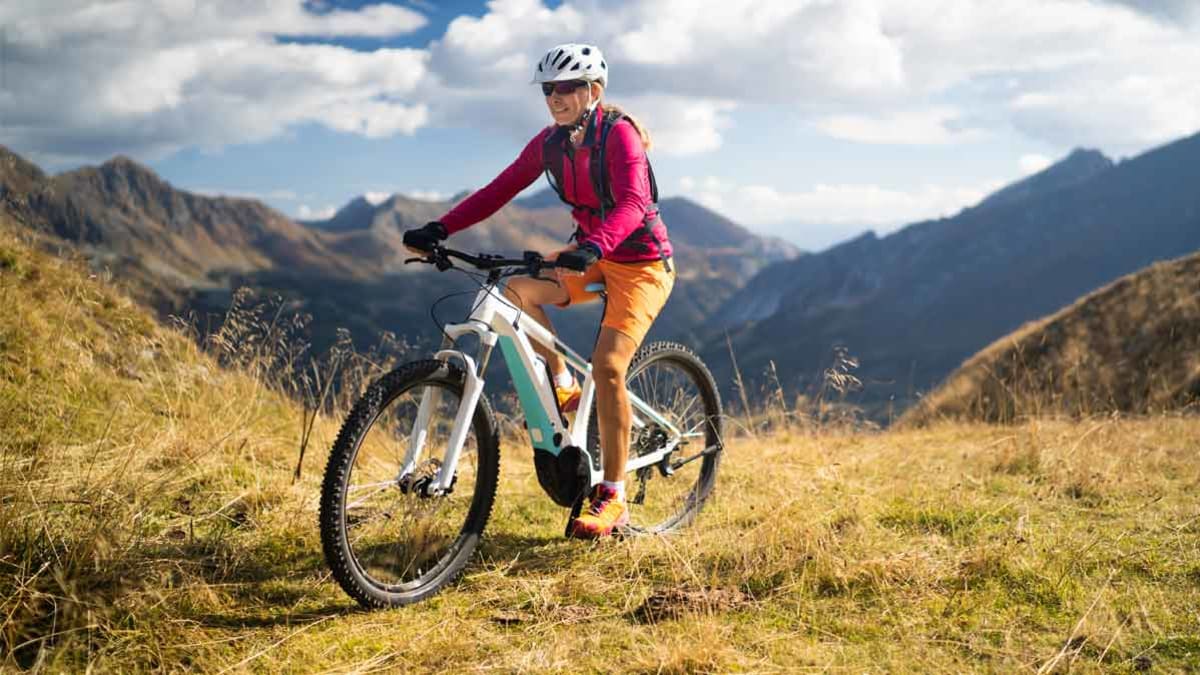Is an Electric Bike Right for You?

As with conventional bicycles, there are several types of e-bikes, each with a special purpose. They can be built to ride on mountain or forest trails, take long rides on the open road, or cruise around at a leisurely pace near home. Conventional cycling purists may knock electric bikes because of the greater ease of pedaling, but some converts have told us they love them.
The extra boost from a battery and an electric motor has also opened up cycling to people who might not otherwise have been able to ride. Sarah Johnson, the Omaha cycling advocate, says she faced having to give up cycling when medical problems made it difficult for her to pedal a conventional bicycle.
“I used to be an e-bike hater, but when I realized that it was e-bike or no riding, I realized how great they are,” she says. “I’m feeling better, but I don’t think I’ll ever get rid of my e-bike.”
Performance Road Bikes
The defining characteristics of a road bike are usually a lightweight frame, slick tires, and drop-down handlebars that help the rider maintain an aerodynamic riding position. It’s not unusual to see a cluster of bright-shirted cyclists pedaling furiously down a bike trail or along the side of the road on these lightweight speed machines.
Like their pedal-powered counterparts, electric road bikes feature slim, light components and require an aerodynamic riding position, both meant to increase efficiency over long distances. The assistance offered by an electric motor makes it possible to cover longer distances, handle steep grades, or pedal into headwinds with less of the fatigue associated with conventional bicycles.
Even though they’re fast and relatively light, performance bikes aren’t for everyone. In most cases, the aggressive, hunched-over riding position can be uncomfortable for some riders.
Mountain Bikes
With thicker frames, bigger tires, and sometimes long-travel suspension components, mountain bikes are built to handle trails, large rocks, logs, and other rough terrain and obstacles. A spin through mountain bike racing videos on the internet reveals that their riders sometimes expect the bikes to handle much more than that—big air jumps and rough terrain, among other demands.
The most fun part of mountain biking is the fast, downhill portion. But getting there usually involves a demanding pedal up steep grades on loose terrain. Adding an electric motor to a mountain bike makes a lot of sense for someone who wants to experience the thrill of downhill riding, but may not have the fitness to handle the grueling uphill slog.
Because of the increased weight and rolling resistance that comes with their beefy wheels and tires, pedaling bikes with large wheels and tires can be exhausting. Electric power makes these kinds of bikes much more appealing simply because it’s possible to do more riding in a day. But electric mountain bikes aren’t permitted on some trails, so be sure to check state and local regulations. Also, as CR’s testers found, it’s important to buy an electric mountain bike with brakes that can handle the extra weight of the battery and electric motor.
Hybrids and Cruisers
Hybrids offer a combination of road bike efficiency and the more upright riding position and straight handlebars preferred by mountain bikers and commuters. This type of bicycle can be a good all-around setup for anyone seeking the best of both worlds.
Cruisers offer a relaxed, comfortable, upright seating position and often a softer ride because of bigger tires and cushier seats. Look for swooping handlebars that keep your arms at a relaxed distance from your body. The addition of an electric motor to either of these configurations makes it possible to use a thicker frame and wider tires to soak up bumps in the road. Volkers, the Maryland commuter, bought this type of e-bike because he can ride it on light off-road trails and paved roads with ease.
Source link











